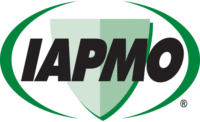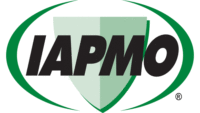The International Association of Plumbing and Mechanical Officials (IAPMO) published the 2021 Uniform Plumbing Code (UPC) in the first quarter of 2020.
As anticipated, the 2021 edition of the UPC has some significant modifications to the sections covering drinking water treatment products. As the 2021 revision of the UPC becomes adopted by states and local jurisdictions, it’s important for industry manufacturers and dealers to understand the code changes that affect drinking water treatment product installations.
This article outlines the 2021 code changes pertaining to water treatment systems and provides some insight on the new water treatment product standards that are referenced in the 2021 revision. Three new standards are referenced in the revised Section 611.1 of the 2021 UPC with regards to drinking water treatment units. Additionally, ASSE 1023 is now referenced in Chapter 4 for low-pressure water dispensers.
Outlined below, is the current 2018 UPC text, followed by the proposed 2021 UPC revisions to Section 611.1 covering water treatment equipment. In the 2021 revision, note the new Table 611.1 and new subsections 611.1.1 and 611.1.2.
2018 UPC Code excerpt
- 611.0 Drinking Water Treatment Units.
- 611.1 Application. Drinking water treatment units shall comply with NSF 42 or NSF 53. Water softeners shall comply with NSF 44. Ultraviolet water treatment systems shall comply with NSF 55. Reverse osmosis drinking water treatment systems shall comply with NSF 58. Drinking water distillation systems shall comply with NSF 62.
- 611.2 Air Gap Discharge. Discharge from drinking water treatment units shall enter the drainage system through an air gap in accordance with Table 603.3.1 or an air gap device in accordance with Table 603.2, NSF 58, or IAPMO PS 65.
- 611.3 Connection Tubing. The tubing to and from drinking water treatment units shall be of a size and material as recommended by the manufacturer.
- 611.4 Sizing of Residential Softeners. Residential-use water softeners shall be sized in accordance with Table 611.4.
2021 UPC Code excerpt
- 611.0 Drinking Water Treatment Units.
- 611.1 Application. Drinking water treatment units shall comply with the applicable referenced standards in Table 611.1.
- 611.1.1 Alkaline Water Treatment. Alkaline water treatment devices shall comply with IAPMO IGC 322.
- 611.1.2 Scale Reduction Devices. Scale reduction devices shall comply with IAPMO Z601.
- 611.2 Air Gap Discharge. Discharge from drinking water treatment units shall enter the drainage system through an air gap in accordance with Table 603.3.1 or an air gap device in accordance with Table 603.2, NSF 58, or IAPMO PS 65.
- 611.3 Connection Tubing. The tubing to and from drinking water treatment units shall be of a size and material as recommended by the manufacturer.
- 611.4 Sizing of Residential Softeners. Residential-use water softeners shall be sized in accordance with Table 611.4.
The new Table 611.1 provides a list of water treatment technologies along with the corresponding performance and safety standards used to test and certify the product types. The table provides details for residential and commercial product standards required in the UPC. Adding this table helps clarify the scope of each product standard. The addition of the ASSE 1087–2018 standard provides clarity regarding the standard covering commercial and food service water treatment products. Along with the new table, two new subsections, 611.1.1 and 611.1.2, provide information on the performance and safety standards that cover alkaline water treatment devices, and products designed to reduce scale from drinking water.
ASSE 1087–2018 performance requirement for commercial and food service water treatment equipment utilizing drinking water
The application of this standard includes commercial water treatment equipment used in point-of-entry (POE) and point-of-use (POU) applications connected to the building plumbing to improve the water quality characteristics of potable water. This standard includes testing requirements for components and complete systems. This standard covers all water treatment products that are connected to the building’s potable water plumbing system. This standard is not intended to cover water treatment products used for process water or wastewater applications. Examples of water treatment equipment include deionizers, filters, softeners, reverse osmosis assemblies, ultraviolet systems, ozone systems and distillers.
Tests verifying claims regarding changes to water chemistry, microbiology and aesthetics (i.e. smell, taste, appearance, etc.) are not included in this standard. Devices may claim such performance via other standards or test protocols.
Similar to other ASSE standards, the ASSE 1087 standard includes minimum performance tests that focus on public health and product safety, such as:
Service flow rate and pressure drop: Testing to verify flow rate and pressure drop characteristics to assist with installation sizing requirements.
Backsiphonage: Products that operated via self-regeneration have integrated backflow protection to ensure the regenerant cannot enter the potable water.
24-hour pressure loss: To ensure that the device’s seals, joints and connections continue to maintain the static working pressure.
Pressure shock (water hammer): To determine if the device, when subjected to a pressure of two times the manufacturer’s maximum rated working pressure, withstands the shock wave produced in downstream piping.
Structural integrity – hydrostatic: This test is performed to ensure the system or component will be able to withstand peak pressures found in a plumbing system when assembled into a complete water treatment system.
Structural integrity — cycle test: This test is performed to ensure the system or component will be able to withstand repeated pressure cycling.
Material safety: To ensure products connected to a potable water supply will not add contaminants to the drinking water above safe levels.
Marking: To provide guidance to uses on temperature and pressure limitations, and to distinguish between products approved for use on potable water vs process water.
IAPMO IGC 322–2018 Alkaline Water – Drinking Water Treatment Units
This standard covers alkaline water drinking water treatment devices intended for use in residential, commercial and food service applications and specifies requirements for materials, performance tests and markings.
Alkaline water: Drinking water treatment products covered by this standard increase alkalinity in potable water using a continuous flow-type electrolytic water generator, and can include the following types:
- Electrolytic water generators with internal power supply equipment for continuous flow;
and - Electrolytic water generators intended to increasing alkalinity in potable water.
Testing requirements include:
Material safety: Alkaline water treatment devices covered by this standard shall be made of materials safe to contact drinking water that complies with Section 4 of NSF/ANSI 42 or NSF/ANSI 53.
Structural integrity: The structural integrity test for alkaline water treatment units shall be conducted in accordance with NSF/ANSI 42, Section 5.4.
Aesthetic and health effects reduction claims: Aesthetic and health effects reduction claims marketed by the alkaline water treatment unit shall be conducted using the performance criteria in NSF/ANSI 42 and NSF/ANSI 53 or other applicable standards.
Alkaline test: The minimum flow rate of 2.2 L/min (0.58 gpm) shall be maintained during production. Samples of product water shall be collected at the manufacturers recommended pH ranges. The specific pH of the product shall be +/- 0.5 the pH measured. Product samples shall be analyzed for oxidation reduction potential (ORP) at each pH. The chart below indicates the required ORP at specified pH ranges.
(a) 8.5 pH - 250-~400 orp
(b) 9.0 pH - 400~550 orp range
(c) 9.5 pH - 500~650 orp
(d) 5.5 pH > +500
(e) 2.7 pH > +1100
f) 11.0 pH > -800 (for example -800 ~ -1100)
Alkaline water generators may have the potential to form total trihalomethane (TTHM) compounds when treating water supplies containing total organic carbon. To address this concern, the product shall have a post filter that conforms to NSF/ANSI 53 for VOC or TTHM reduction.
IAPMO/ANSI Z601–2018 Scale Reduction Devices
Although several alternatives to ion-exchange water treatment devices have the potential to offer solutions to consumers’ need for scale reduction, lack of an appropriate test protocol that can be used to certify their effectiveness did not exist until IAPMO/ANSI Z601 was published in 2019. This standard was developed to enable testing of devices that have the potential to reduce encrusted scale in residential water heaters and down-stream associated plumbing. The standard includes the following test requirement categories: material safety, structural integrity, scale reduction performance testing for tank-type water heaters and tankless water heaters requiring a minimum of 70% reduction in scale formed in the water heater and downstream piping.
The scope of the standard covers scale reduction devices intended for residential and similar water heating applications. The intent of this standard is to rate or verify the effectiveness of the product’s ability to reduce or eliminating scale in hot water systems and downstream water piping systems.
The development of IAPMO/ANSI Z601 now allows companies to verify the scale reduction performance of their device. It also allows certification bodies the ability certify the scale reduction performance utilizing an ANSI standard.
ASSE 1023-2019 Electrically Heated or Cooled Water Dispensers
The ASSE 1023 standard has been referenced in the UPC and the International Plumbing Code (IPC) for many years. However, this standard has undergone a significant update for the 2019 edition. ASSE 1023-2019 now applies to filtered and nonfiltered water dispensers that cool or heat drinking water. The standard also now covers water dispensers, filtered or unfiltered, that include an integral electrically powered heater or cooler. Examples of products covered by this standard include, but are not limited to, undercounter-mounted water dispensing systems, freestanding plumbed systems, freestanding bottled systems, and countertop systems. These products are for both residential and commercial use. The following tests are required:
- Abnormal discharge and minimum water temperature.
- Instant capacity for heater water.
- Continuous capacity.
- Contamination reduction testing for products that incorporate water treatment.
- Material safety and lead content.
- Installation and maintenance instructions.
As water treatment products become more common (the norm) in residential and commercial buildings, the 2021 UPC continues to set the bar for addressing new product consumer safety. The revisions to Section 611.1 of the UPC will help the building, plumbing and water treatment community understand the applicable product standards required to comply with the code.
The new standards that have been added to the code will allow companies a clear path for code compliance for residential and commercial buildings. Water quality issues continue to surface around the county and the aging water infrastructure in the U.S. continues to increase the demand for residential and commercial water treatment equipment. The IAPMO Group and ASSE International are committed to working with the water treatment industry to advocate solutions to the increasing list of water problems businesses and consumers are facing.





